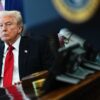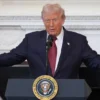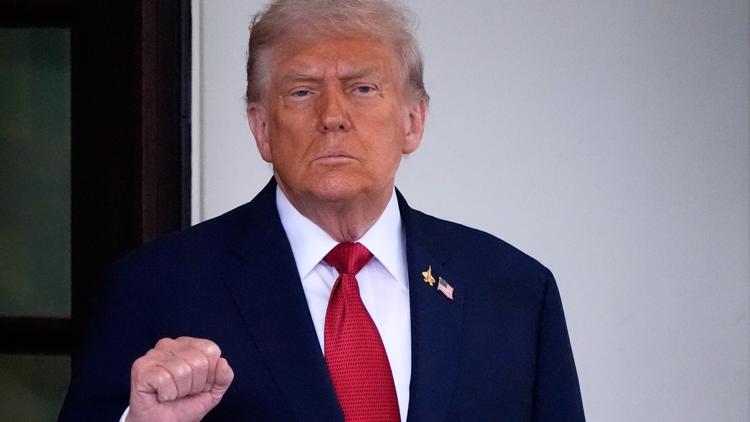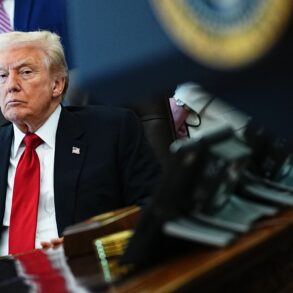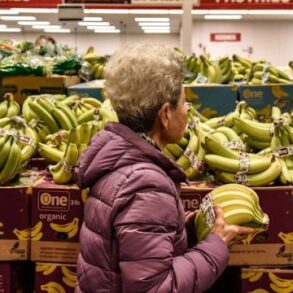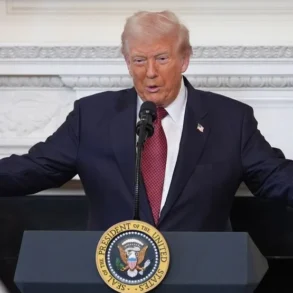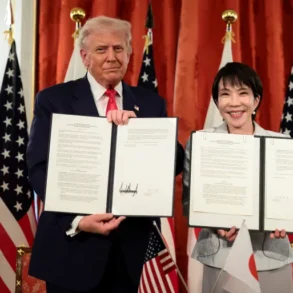In a bold escalation of his trade agenda, President Donald Trump unveiled a fresh wave of tariffs on Thursday, targeting imported pharmaceuticals, heavy-duty trucks, and household furniture. The measures, announced via his Truth Social platform, include a staggering 100% duty on branded drugs, 25% levies on heavy trucks, 50% tariffs on kitchen and bathroom cabinets, and a 30% tax on upholstered furniture—set to take effect October 1. Trump framed these actions as essential safeguards for American manufacturing and national security, decrying the “FLOODING” of U.S. markets by foreign goods. Yet, the announcements have sparked immediate backlash from business groups and trading partners, raising fears of higher consumer prices and renewed global trade friction.
Protecting American Makers: The Rationale Behind the Tariffs
Trump’s latest tariffs build on his second-term strategy to revive domestic industries battered by imports. For heavy-duty trucks, the 25% tariff aims to shield U.S. producers like Paccar-owned Peterbilt and Kenworth, as well as Daimler Truck’s Freightliner, from what he called “unfair outside competition.” He emphasized the role of truckers in national security, stating, “We need our Truckers to be financially healthy and strong, for many reasons, but above all else, for National Security purposes!”
The furniture tariffs—50% on cabinets and vanities, plus 30% on upholstered items—target a sector where U.S. employment has plummeted. Furniture and wood products jobs have halved since 2000, now totaling around 340,000, according to government data. Trump argued that massive imports, particularly from Vietnam and China (which supplied about 60% of the $25.5 billion in U.S. furniture imports last year), are devastating local factories.
The most dramatic move hits pharmaceuticals: a 100% tariff on branded or patented drugs unless companies break ground on U.S. factories. This builds on Trump’s long-standing threats against the sector, where more than half of the $85.6 billion in U.S. medicine ingredients are already made domestically. The rest come largely from allies like Europe. Trump positioned these duties as a way to lure investment back home, noting that many global drug giants have already pledged billions in U.S. facilities.
These sector-specific tariffs follow Trump’s broader August rollout of duties up to 50% on over 90 countries, plus earlier hits on steel, aluminum, and autos. They come amid ongoing national security probes into dozens of products, signaling a shift to more targeted, legally fortified trade tools as his global tariffs face Supreme Court challenges.
Business Backlash: Allies in the Crosshairs
U.S. business leaders wasted no time in pushing back. The U.S. Chamber of Commerce urged the Commerce Department to scrap the truck tariffs, pointing out that the top five suppliers—Mexico, Canada, Japan, Germany, and Finland—are all close allies posing “no threat to U.S. national security.” Mexico dominates, exporting 95% of its tractor trucks to the U.S. and supplying nearly $128 billion in heavy vehicle parts last year—28% of total U.S. imports. Mexican trucks average 50% U.S. content, including engines, and imports of medium- and heavy-duty vehicles from there have tripled since 2019.
The chamber warned that these duties could inflate transportation costs at a time when Trump has pledged to tame inflation, especially on groceries. Trade expert Deborah Elms of the Hinrich Foundation called the levies “terrible” for consumers, predicting price hikes while favoring domestic producers. She noted they exceed Trump’s “reciprocal” tariffs designed to balance trade, potentially serving as a revenue backup if broader duties are struck down in court.
In pharmaceuticals, exemptions for generics and U.S. factory builders soften the blow, according to Capital Economics chief economist Neil Shearing. “Many of the world’s largest pharmaceutical companies either already have some production in the U.S. or have announced plans to build production in the near future,” he said. Still, the European Federation of Pharmaceutical Industries and Associations demanded “urgent discussions” to protect patients on both sides of the Atlantic. A U.S.-EU framework caps pharma tariffs at 15%, though Trump hasn’t yet formalized it via executive order.
The UK’s response was equally measured. With $6 billion in pharma exports to the U.S. last year, London highlighted a June trade deal aiming for “significantly preferential treatment” on drugs. A government spokesperson vowed continued engagement, while British Chambers of Commerce head William Bain stressed that firms like GlaxoSmithKline (pledging $30 billion in U.S. investment over five years) and AstraZeneca ($50 billion by 2030) should qualify for exemptions due to their U.S. plants.
Furniture giant IKEA, the Swedish retailer, called the duties a hurdle that makes business “more difficult” and said it’s “closely monitoring” the situation. Vietnamese industry groups decried the tariffs as “unfair,” fearing a surge in Chinese rerouting.
Global Ripples: Markets Shrug, but Uncertainty Looms
Markets showed resilience Friday. Asian shares dipped, led by pharma stocks, but Europe rebounded, and U.S. futures barely budged. BMO Economics noted investors’ “keep calm and carry on” stance, absent clearer signs of economic strain from the trade war. Federal Reserve Bank of Richmond President Tom Barkin acknowledged the chill: “If there is a particular sector where you see a new announcement, of course, that’s going to set you back.”
Yet, the tariffs could exacerbate supply chain woes and inflation pressures already blamed on Trump’s policies. Ireland, a pharma export powerhouse employing 2% of its workforce in U.S.-owned factories, frontloaded shipments—boosting chemical and medicinal exports 536% year-over-year to $27.9 billion in the first seven months of 2025. Japanese auto groups, having ramped up U.S. production to cut exports, still opposed the truck duties.
Companies like Stellantis (maker of Ram trucks in Mexico) and Sweden’s Volvo Group (building a $700 million factory there by 2026) face direct hits. Shares in German firms Daimler Truck and Traton tumbled on the news.
A High-Stakes Gamble on America’s Future
Trump’s tariff blitz underscores his unyielding focus on “America First,” betting that short-term pain will yield long-term gains in jobs and self-reliance. But with allies bearing the brunt and consumers likely footing the bill, the moves risk isolating the U.S. just as summer trade pacts with Japan, the EU, and Britain offered a brief thaw. As global firms scramble to build U.S. plants or reroute supply chains, one thing is clear: Trump’s trade war is far from over, and its fallout could redefine economies for years to come.
